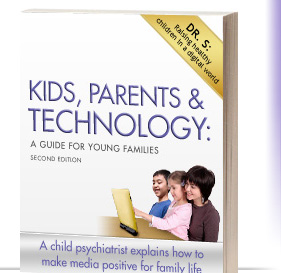ALTERNATIVES TO VIOLENCE
Eitan D. Schwarz, M.D., D.L.F.A.P.A., F.A.A.C.A.P.
CLINICAL ASSISTANT PROFESSOR, FEINBERG SCHOOL OF MEDICINE
NORTHWESTERN UNIVERSITY
CHICAGO, IL
Copyright © 2002 Eitan D Schwarz. All rights reserved. This handout may be copied and distributed only for non-profit educational use.
Q: How can I help my son learn social responsibility and alternatives to violence as he grows up? As a brand new parent, I am alarmed by what he might learn AND NOT LEARN from so many popular TV shows, movies, magazines, music, professional sports, and computer games — the ever present popular culture that will engulf him.
A: Learning social responsibility and how to resolve conflict without violence is a life-long undertaking. Parents should give children sound groundings in the essential basics by teaching and practicing these attitudes and values.
Start by deciding (together with your partner if appropriate) on the values that matter to you and that you want to convey to your child. Your child will always look to you for clarity, so be clear in your own mind about where you stand about violence and how you practice your attitudes in daily life.
Your baby is already learning essential core attitudes of trust and security that will last his lifetime directly from how well he has been treated from early infancy onward. Make sure you understand thoroughly your baby’s unique developing physical and emotional needs and meet them as fully as you can. Never direct violence — verbal or physical — at your child and always shield the child from witnessing violence. If you show him that the world is an unpredictable or dangerous place and that violence is acceptable, he will have a hard time unlearning these lessons later on and may never succeed.
Early in the preschool years you can begin teaching your child kindness, personal responsibility, compassion, positive problem solving, respect for himself and others, the Golden Rule, the value of individual life and community, and the balance between self assertion and social responsibility. It is better for parents to be proactive than reactive. Teach and model such values throughout your child’s life.
Children welcome help as they struggle to figure out what is right and what is wrong and the gray areas in between. Always ask the child for his opinions as a starting point. Keep the conversation short and simple with younger children and use examples from fairy tales and stories and play with dolls and pets. As he gets older and begins school, engage your son in active conversations about moral and ethical matters whenever opportunities present themselves in the child’s daily life. Review moral matters with the child daily.
Children benefit from learning that anger is a common and normal human feeling. But they must learn the difference between feeling or thinking angry and acting violently, a lesson that should be repeated often. Learning to label the feeling and to resist the impulse to act on it takes much practice. It is also important to teach children to accept and expect that conflicts and differences will normally occur between well-meaning people and must be resolved without violence. Teach children skills to achieve this goal. Competitiveness and assertiveness based on respect for self and others are healthy, while bullying or being bullied are not. Non-violent ways of expressing and channeling anger and frustration should be taught to children daily.
Older children and pre-teens should be taught that impaired judgment caused by alcohol and other drugs often leads to violence. However, mental illness is not a cause of violence, and violent people are not necessarily ‘crazy’ or mentally ill. Older children and teens can also be taught that there may be times when violence can be an acceptable solution (e.g. war, self defense, preventing terrorism), but always with restraint and only as a last resort and never when driven only by impulse or personal anger. Help the teen channel aggressiveness and energy away from violence and high risk behaviors and into positive and constructive activities.
When a child is aggressive or violent, understand the cause and then give guidance and appropriate discipline or punishment. Ask the child to think about what problem his violence was supposed to address and help him think through alternative solutions. If he does not respond to your efforts, obtain professional help rather than getting into an endless spiral of negative interactions. Some children, like those with Attention Deficit Disorder, find it hard to learn from experience.
Involve your family in community service projects and encourage each family member to perform at least one good deed daily. Review these together as a family at dinner. These are other ways to inculcate values and enrich and strengthen your personal, family, and community life.
Most importantly, your own actions — “Do as I do, not as I say” — really matter. Try to put into practice non-violent values in your own life (with help from your religion if part of your life.) Refrain from directing physical or verbal violence at others. Our handouts APOLOGIZING and IS IT PUNISHMENT OR ABUSE? provide some insights. Your own behavior — personal responsibility, compassion, positive problem solving, respect for yourself and others, practice of the Golden Rule, respect for the value of individual life, and a striving for balance between self assertion and social compliance — especially as practiced towards all in the household (including the child, siblings, grandparents, and even pets) is your main means of teaching such attitudes. Indeed often, “The acorn does not fall far from the tree.”



